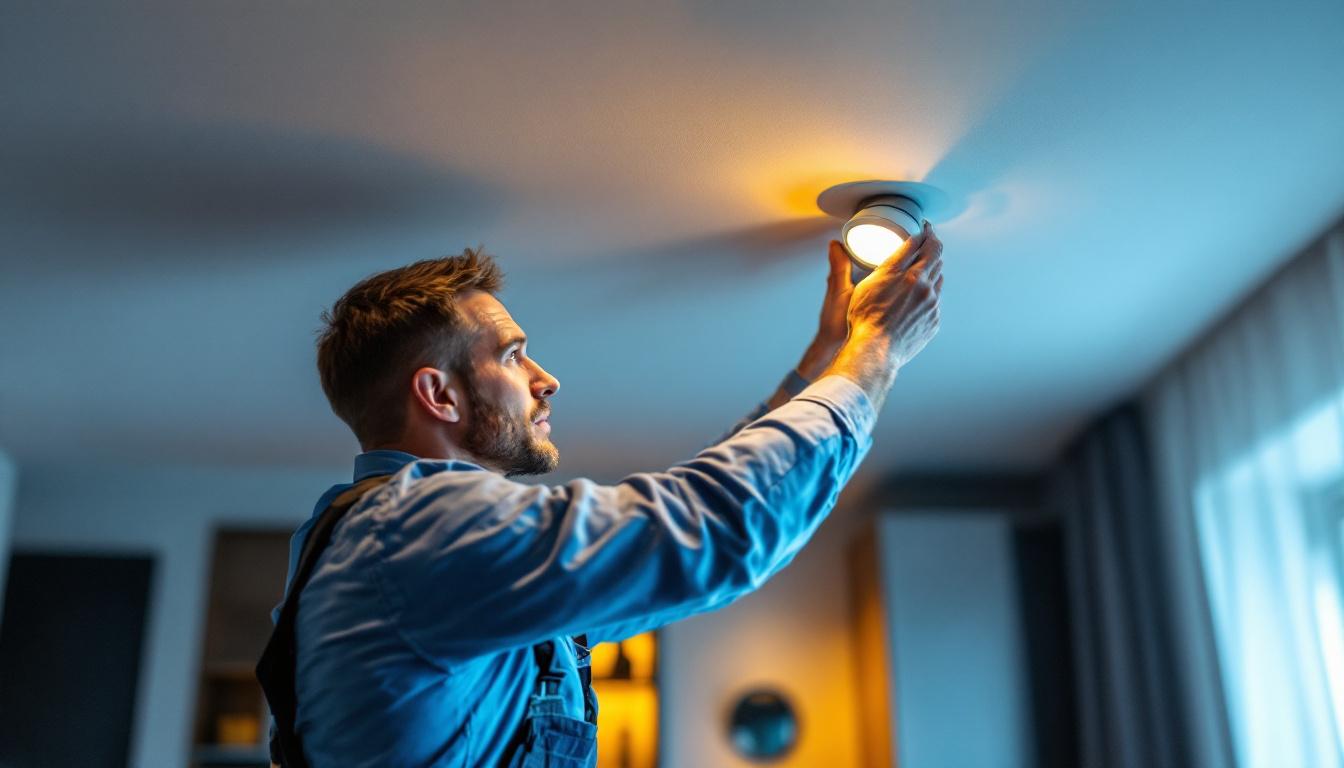
Recessed lighting has become a staple in modern interior design, offering a sleek and unobtrusive way to illuminate spaces. For lighting contractors, mastering this type of lighting is essential to meeting the diverse needs of clients. This article delves into five key aspects of recessed lighting that contractors should focus on to enhance their skills and service offerings.
Before diving into the intricacies of installation and design, it is crucial for lighting contractors to have a solid understanding of what recessed lighting entails. Recessed lighting fixtures, often referred to as can lights or pot lights, are installed into the ceiling, creating a clean and modern look. This type of lighting can serve various purposes, from ambient lighting to task lighting. With their unobtrusive design, recessed lights can enhance the aesthetic appeal of a space while providing effective illumination without taking up visual real estate.
Recessed lighting systems consist of several key components: the housing, trim, and bulb. The housing is the part that is installed into the ceiling and holds the light fixture. Trims are the visible parts that come in various styles and finishes, allowing for customization. Finally, the bulb type—whether LED, incandescent, or fluorescent—affects not only the quality of light but also energy efficiency. Additionally, the choice of bulb can influence the color temperature, which ranges from warm to cool light, allowing for a tailored ambiance that can suit different moods and activities.
Recessed lighting can be used in a variety of settings, from residential homes to commercial spaces. In living rooms, it can provide ambient lighting that enhances the overall atmosphere. In kitchens, it can serve as task lighting over work areas. Understanding these applications allows contractors to offer tailored solutions that meet specific client needs. Furthermore, in commercial environments such as offices and retail spaces, recessed lighting can be strategically placed to highlight products or create focused work areas, significantly improving both functionality and aesthetics. The versatility of recessed lighting makes it an ideal choice for creating layered lighting designs that can adapt to different activities throughout the day.
Moreover, the installation of recessed lighting can also contribute to energy efficiency in a home or business. By opting for LED bulbs, for instance, contractors can help clients reduce their energy consumption significantly while still achieving bright and effective lighting. LED recessed lights have a longer lifespan compared to traditional bulbs, which not only saves money on replacements but also minimizes waste. This eco-friendly aspect of recessed lighting is becoming increasingly important to consumers who are looking to make sustainable choices in their home renovations or new constructions. As such, understanding the benefits and applications of recessed lighting can empower contractors to guide their clients toward making informed decisions that align with both their aesthetic preferences and environmental values.
Selecting the appropriate fixtures is a critical step in the recessed lighting process. Not all fixtures are created equal, and the choice can significantly impact both aesthetics and functionality.
There are several types of recessed lighting fixtures available on the market. For instance, new construction fixtures are designed for use in homes that are still being built, while remodel fixtures can be installed in existing ceilings. Understanding the differences between these options helps contractors make informed recommendations to clients. Additionally, there are adjustable and fixed fixtures, which allow for versatility in directing light where it’s needed most. Adjustable fixtures are particularly useful in spaces with artwork or architectural features that you want to highlight, while fixed fixtures provide a more uniform lighting effect throughout the area.
The size of the fixtures and their placement within a space are essential factors that can influence the effectiveness of recessed lighting. Generally, larger fixtures provide more light, but they can also overwhelm smaller spaces. Proper placement is equally important; a common rule of thumb is to space fixtures no more than 6 to 8 feet apart to ensure even lighting coverage. Furthermore, considering the height of the ceiling is crucial; higher ceilings may require deeper fixtures or more powerful bulbs to achieve the desired illumination. In addition, the color temperature of the bulbs can dramatically affect the ambiance of a room; warmer tones create a cozy atmosphere, while cooler tones can make a space feel more modern and spacious. By carefully considering these elements, homeowners can create a lighting scheme that enhances their living environment while also being functional and energy-efficient.
Installing recessed lighting requires a combination of technical skill and an understanding of electrical systems. Proper installation not only ensures safety but also maximizes the effectiveness of the lighting. The aesthetic appeal of recessed lighting can transform a space, making it feel more open and inviting while providing functional illumination that highlights architectural features and artwork.
Before beginning any installation, it is vital for contractors to familiarize themselves with local electrical codes and regulations. Adhering to these guidelines ensures that installations are safe and compliant, protecting both the contractor and the client. It is also important to consider the specific requirements for different types of fixtures, such as IC-rated (Insulation Contact) fixtures that can be installed in ceilings with insulation, as well as non-IC-rated fixtures that require a certain distance from insulation to prevent overheating. Understanding these distinctions can prevent potential hazards and ensure the longevity of the lighting system.
The installation process generally involves several key steps: determining the layout, cutting holes in the ceiling, wiring the fixtures, and securing them in place. Each step must be executed with precision to avoid issues such as flickering lights or uneven illumination. Additionally, using the right tools and materials can streamline the process and enhance the final outcome. For instance, a laser level can help achieve perfect alignment and spacing between fixtures, while high-quality wire connectors can ensure secure and reliable electrical connections. Furthermore, planning the layout to include dimmer switches can enhance the versatility of the lighting, allowing homeowners to adjust the ambiance of their space according to their needs.
As technology advances, so do the options for controlling recessed lighting. Integrating lighting control systems can elevate a contractor’s service offerings and provide clients with enhanced convenience.
Smart lighting systems allow homeowners to control their recessed lights via smartphones or voice-activated devices. These systems can be programmed for different settings, such as dimming or color changes, making them an attractive option for tech-savvy clients. Understanding the various smart lighting options available can help contractors provide comprehensive solutions that meet modern demands.
In addition to smart lighting, traditional dimmer switches remain a popular choice for controlling recessed lighting. They allow users to adjust the brightness according to their needs, creating a versatile lighting environment. Educating clients about the benefits of dimmer switches can enhance their overall experience and satisfaction.
Design plays a crucial role in the effectiveness of recessed lighting. Contractors must consider not only the technical aspects but also how the lighting will complement the overall aesthetic of a space.
The color temperature of the bulbs used in recessed lighting can dramatically affect the ambiance of a room. Warmer tones create a cozy atmosphere, while cooler tones can make a space feel more vibrant and energetic. Contractors should guide clients in selecting the right color temperature to align with their design vision.
Recessed lighting should not be the sole source of illumination in a room. Instead, it should work in harmony with other types of lighting, such as task and accent lighting, to create layers of light. This layered approach enhances depth and dimension, making spaces feel more inviting and dynamic.
Even the best-installed recessed lighting may require maintenance over time. Being proactive about maintenance can help contractors build lasting relationships with clients.
Common issues with recessed lighting include flickering bulbs, uneven lighting, and overheating. Understanding the root causes of these problems allows contractors to provide effective solutions. For instance, flickering may be a sign of a loose connection or an incompatible dimmer switch, while uneven lighting could result from improper placement of fixtures.
Encouraging clients to perform regular maintenance checks can prolong the life of their recessed lighting systems. Simple tasks such as cleaning the fixtures and checking for signs of wear can prevent more significant issues down the line. Providing clients with a maintenance checklist can enhance their satisfaction and trust in the contractor’s expertise.
Mastering recessed lighting is an essential skill for lighting contractors looking to elevate their service offerings. By understanding the fundamentals, choosing the right fixtures, employing effective installation techniques, integrating modern control systems, considering design elements, and providing ongoing maintenance support, contractors can ensure their clients receive high-quality lighting solutions that enhance their spaces.
As the demand for recessed lighting continues to grow, contractors who invest time and effort into mastering these aspects will stand out in a competitive market. Embracing innovation, staying informed about trends, and prioritizing customer satisfaction will ultimately lead to success in the lighting industry.
Ready to take your recessed lighting projects to the next level? At LumenWholesale, we provide lighting contractors with the highest quality, spec-grade lighting products at unbeatable wholesale prices. Say goodbye to local distributor markups and hello to a vast selection of reliable, high-performance lighting that meets the highest industry standards. Plus, with free shipping on bulk orders, you can stock up on premium lighting without any hidden fees or compromises. Elevate your service offerings with the perfect blend of quality, affordability, and convenience. Visit LumenWholesale today and experience the best value in wholesale lighting for your next project.

Discover the essential factors lighting contractors need to consider when selecting 0.120 inch fixtures.

Discover essential tools and technologies that every lighting contractor needs to enhance efficiency and precision in their projects.

Discover essential tips and best practices for lighting contractors to effectively install and utilize wall pack LED lights.

Discover essential insights into incandescent recessed lighting tailored for lighting contractors.